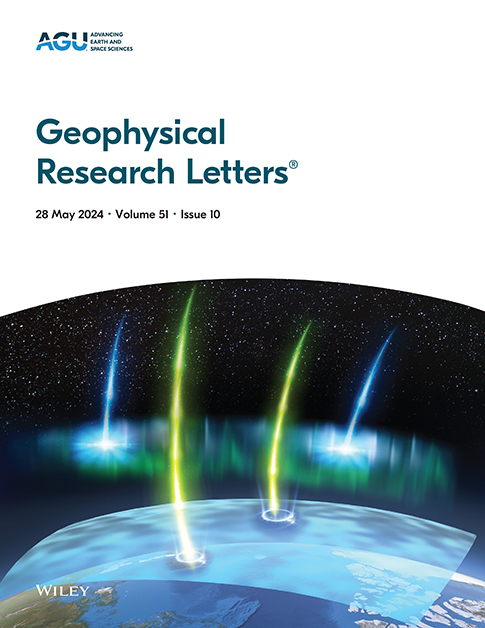矿物-水界面纳米级分解反应速率的幂律标度机制的证据
IF 4.6
1区 地球科学
Q1 GEOSCIENCES, MULTIDISCIPLINARY
引用次数: 0
摘要
我们报告了首次对驱动矿物和流动水之间界面纳米级自组织的溶解速率统计尺度的定量分析。我们的研究提供了两种幂律标度制度之间出现交叉的证据,其特征是不同程度的持久性。我们将这些与溶解模式的纳米级特征的作用联系起来,并通过新的理论框架捕获实验行为。这为分析矿物-水界面的化学风化印记变化开辟了前所未有的途径。本文章由计算机程序翻译,如有差异,请以英文原文为准。
Evidence of Power‐Law Scaling Regimes for Nanoscale‐Resolved Reaction Rates at Mineral‐Water Interfaces
We report the first quantitative analysis of statistical scaling of dissolution rates driving nanoscale self‐organization of the interface between a mineral and flowing water. Our study provides evidence of emergence of cross‐over between two power‐law scaling regimes characterized by distinct levels of persistence. We tie these to the action of nanoscale features of dissolution patterns and capture experimental behaviors through a new theoretical framework. This opens unprecedented avenues to analyze chemical weathering imprinting alterations of mineral‐water interfaces.
求助全文
通过发布文献求助,成功后即可免费获取论文全文。
去求助
来源期刊

Geophysical Research Letters
地学-地球科学综合
CiteScore
9.00
自引率
9.60%
发文量
1588
审稿时长
2.2 months
期刊介绍:
Geophysical Research Letters (GRL) publishes high-impact, innovative, and timely research on major scientific advances in all the major geoscience disciplines. Papers are communications-length articles and should have broad and immediate implications in their discipline or across the geosciences. GRLmaintains the fastest turn-around of all high-impact publications in the geosciences and works closely with authors to ensure broad visibility of top papers.
 求助内容:
求助内容: 应助结果提醒方式:
应助结果提醒方式:


